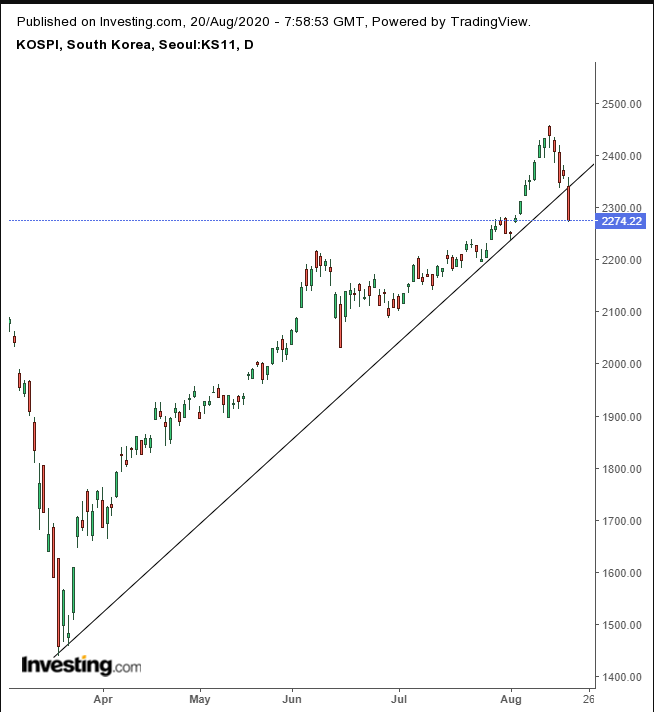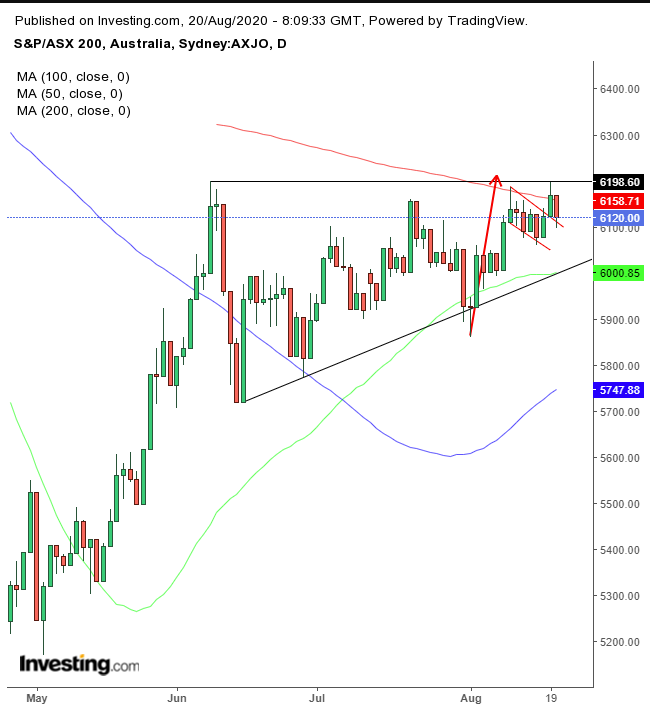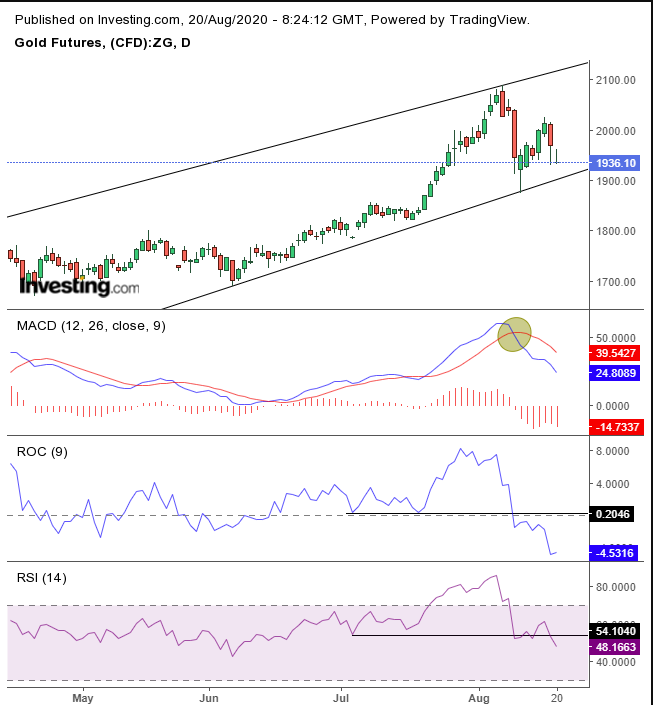- All four US contracts open lower with European stocks
- Asian shares all slump
- Yields fall again, even after Fed opposes yield curve control
Key Events
Global markets along with US futures for the Dow Jones, S&P 500, NASDAQ and Russell 2000 were a sea of red on Thursday, after the Federal Reserve, on Wednesday, lowered expectations for economic growth over the rest of the year.
Treasuries advanced, the dollar's rebound stalled—though at time of writing that appeared to be back on track, gold dropped, and oil slid.
Global Financial Affairs
All four contracts for the main US benchmarks opened lower this morning, along with European stocks, after all Asian indices closed down on Thursday.
Yesterday's release of the FOMC minutes proved to be a reality check for investors, pouring ice water on overheated bullish sentiment just hours after the S&P 500 Index achieved back-to-back, all-time highs, for the first time since the coronavirus injected panic into markets.
At time of publication, it appears that US equities are headed for another decline today. The bottom line from the central bank: economic growth depends on management of the COVID-19 pandemic. That's something we've been arguing since the initial dead cat bounce stocks enjoyed off the March lows.
Lower metal prices weighed on miners, which led the Stoxx Europe 600 Index in a broad selloff as the Fed release seems to have dispelled the notion of a V-shaped recovery.

The pan-European index appears to be developing a H&S top, which may complete when the price falls to 350.00.
Earlier, Asian investors dumped stocks. South Korea’s KOSPI underperformed, (-3.7%), falling the most in two months as concerns rose over the biggest spike in virus cases since March, when global stocks bottomed, leading Seoul to tighten COVID-19 restrictions.

The steep selloff in the South Korean index pushed stocks well below their uptrend line since the March low—with a failed attempt to climb back over the same uptrend line, showing a direct relationship between the infection rate and stock performance.
Despite a deepening trade conflict with Beijing after Canberra blocked a buyout of some of Australia's best-known dairy brands by China's Mengniu Dairy, the ASX 200 fell only 0.75%, outperforming the region. Perhaps, demand for Australian shares held up for technical reasons.

The benchmark completed a falling flag within an ascending triangle, as the price bounced between the 50 DMA and the 200 DMA ahead of a potential upside breakout.
After the Fed release, which revealed the central bank's policymakers were opposed to yield curve control, rates, including for the 10-year benchmark Treasury, trimmed losses to end higher.

Rates rebounded off the broken downtrend line since March, also supported by the 100 DMA.
The dollar was little changed after yesterday’s post-FOMC surge.

While the dollar kept yesterday’s gains, it also stopped short of extending those gains, having encountered a dual-resistance—a bearish pennant and the original bottom of the falling channel since the March high, which the pennant broke.
Gold increased yesterday's descent, pressured by a stronger dollar.

The yellow metal remains within a rising channel. However, as we've already pointed out, all indicators are bearish.
Bitcoin is down for the third straight day, its longest losing streak since June 27th’s 5-day selloff.
Oil fell from a five-month high after its first back-to-back gains in over two weeks. The Fed’s bleak’s outlook means lower demand for energy. Indeed, there are a number of reasons why oil prices could be headed lower still.
Up Ahead
- Earnings results from Alibaba (NYSE:BABA) are due Thursday.
- U.S. initial jobless claims for the week ended Aug. 15 are released on Thursday.
- Eurozone PMIs will be released on Friday.
Market Moves
Stocks
- The Stoxx Europe 600 Index sank 1.2%.
- Futures on the S&P 500 Index declined 0.5%.
- NASDAQ 100 futures decreased 0.5%.
- The MSCI Asia Pacific Index Index sank 1.6%.
Currencies
- The Dollar Index was little changed.
- Sterling weakened 0.3% to 0.9064 per euro.
- The Japanese yen strengthened 0.1% to 106.03 per dollar.
- The South Korean won weakened 0.5% to 1,186.94 per dollar.
Bonds
- The yield on 10-year Treasuries dipped two basis points to 0.66%.
- The yield on two-year Treasuries fell less than one basis point to 0.14%.
- Britain’s 10-year yield dipped one basis point to 0.227%.
- Germany’s 10-year yield decreased one basis point to -0.48%.
